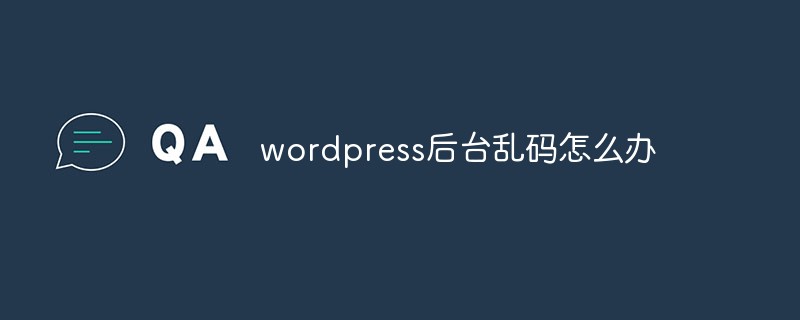 Backend Development
Backend Development PHP Tutorial
PHP Tutorial Optimize WordPress's Google fonts to speed up running on domestic servers, wordpressgoogle_PHP tutorial
Optimize WordPress's Google fonts to speed up running on domestic servers, wordpressgoogle_PHP tutorialOptimize the Google fonts of WordPress to speed up the operation on domestic servers. wordpressgoogle
Since Google has been completely blocked, Google fonts cannot be loaded without circumventing the wall. Many novice friends often complain about how slow the host they bought is. The example website was given to open in seconds, but it takes dozens of seconds to open their own website. Moreover, it is a newly installed WordPress website without any pictures and it is very slow. In fact, many times WordPress is slow not because of the host, but because of Google fonts. Today we will provide you with a super detailed tutorial on optimizing Google fonts, just for beginners.
How to check if your website contains Google Fonts
First, open FireFox or Chrome and enter incognito mode. You can use the shortcut key Ctrl Alt P for Firefox and the shortcut key Ctrl Alt N for Chrome.
Secondly, enter the developer mode. Both browsers can use the shortcut Ctrl Alt N to enter. Here we take FireFox as an example.

Then visit your website and sort the loaded content by domain name at the bottom of the window. If you can see the content of 'fonts.googleapis.com', it means that your WordPress does reference Google fonts.

It looks like this in Chrome:

Optimizing Google Fonts Solution 1:
Install the plug-in. This is the simplest and most direct method and is more suitable for novices. Search for 'disable Google fonts' in the WordPress backend, and a bunch of plug-ins will come out. The top two plug-ins are "Disable Google Fonts" and "Remove Google Fonts References". Personally tested the "Remove Google Fonts Reference" plug-in to be more effective.

Optimize Google Font Solution 2:
Modify WordPress code. If you can modify your WP code through FTP or an online file editor, this is an effective method. Novice webmasters don’t have to worry, even if you don’t have any coding foundation, just follow the tutorial step by step. Open the wp-includes/scriptes-loader.php file. If you downloaded it locally via FTP, it is recommended to use notepad to open it. Use Ctrl H to replace the full text of googleapis with useso, then save and upload the overwritten source file.

The ultimate solution:
If the above methods fail, there is another simple and crude method, which is to package and download all WP files locally. Of course, the uploads folder under wp-content does not need to be used. Then use notepad's "File Search" function to replace all googleapis with useso, and then upload the modified file.

However, if you use CDN acceleration or any caching plug-in, you must clear the cache after modification, especially plug-ins such as wp-total-cache.
 wordpress后台乱码怎么办Feb 03, 2023 pm 01:48 PM
wordpress后台乱码怎么办Feb 03, 2023 pm 01:48 PMwordpress后台乱码的解决办法:1、在wordpress的“wp-admin”文件夹下找到“admin.header.php”文件;2、将“charset”属性值设置为“UTF-8”格式即可恢复正常。
 如何解决wordpress标签错误问题Feb 03, 2023 pm 02:03 PM
如何解决wordpress标签错误问题Feb 03, 2023 pm 02:03 PMwordpress标签错误的解决办法:1、找到并打开wordpress的“wp-includes”目录下的“class-wp.php”文件;2、修改内容为“$pathinfo = isset( $_SERVER['PATH_INFO'] )?mb_convert_encoding($_SERVER['PATH_INFO'],'utf-8','GBK') : '';”即可。
 WordPress设置独立的Description和KeywordsFeb 21, 2023 am 11:14 AM
WordPress设置独立的Description和KeywordsFeb 21, 2023 am 11:14 AM你下载的WordPress主题提供的keywords和description这两个meta标签一般都做得很差,或者根本就不提供,这样不利于SEO。本文将指导你如何给主页、分类、页面以及文章页添加单独的Description 和 Keywords。
 wordpress乱码怎么办Mar 09, 2023 am 09:13 AM
wordpress乱码怎么办Mar 09, 2023 am 09:13 AMwordpress乱码的解决办法:1、修改“wp-config.php”文件里的“define(’DB_CHARSET’, ‘utf8′);”为“define(’DB_CHARSET’, ”);”;2、把新数据库的编码设置成“latin1_swedish_ci”;3、以uft8的格式导入备份的数据库文件即可。
 wordpress进不去怎么办Feb 23, 2023 am 09:41 AM
wordpress进不去怎么办Feb 23, 2023 am 09:41 AMwordpress进不去的解决办法:1、把地址栏“wp-login.php”后面的参数删掉,然后重新输入密码登录;2、登录FTP,下载“pluggable.php”文件,然后找到“ADMIN_COOKIE_PATH”并将它替换为“SITECOOKIEPATH”即可。
 wordpress是saas吗Feb 21, 2023 am 10:40 AM
wordpress是saas吗Feb 21, 2023 am 10:40 AMwordpress不是saas。SaaS是一种软件销售模式,它主要针对云端应用软件,而WordPress是一款CMS系统,它主要针对网站构建和管理。虽然WordPress可以作为SaaS提供服务,但它本质上不是一种SaaS应用。
 2023年最新WordPress视频教程推荐Oct 25, 2019 pm 01:12 PM
2023年最新WordPress视频教程推荐Oct 25, 2019 pm 01:12 PM本次PHP中文网整合了相关的视频教程,中文手册,以及相关的精选文章安利给大家,统统免费!!!通过我们分享的视频,可随时随地免费观看教程视频,也不需要迅雷或者百度网盘下载了。
 wordpress是哪一年的Feb 01, 2023 am 10:26 AM
wordpress是哪一年的Feb 01, 2023 am 10:26 AMwordpress是2003年发布的;Matt于2003年5月27日宣布推出第一版WordPress,受到了社区的欢迎,它基于b2 Cafelog并有显著改进;WordPress的第一个版本包括全新的管理界面、模板、XHTML 1.1兼容模板、内容编辑器。


Hot AI Tools

Undresser.AI Undress
AI-powered app for creating realistic nude photos

AI Clothes Remover
Online AI tool for removing clothes from photos.

Undress AI Tool
Undress images for free

Clothoff.io
AI clothes remover

AI Hentai Generator
Generate AI Hentai for free.

Hot Article

Hot Tools

PhpStorm Mac version
The latest (2018.2.1) professional PHP integrated development tool

Safe Exam Browser
Safe Exam Browser is a secure browser environment for taking online exams securely. This software turns any computer into a secure workstation. It controls access to any utility and prevents students from using unauthorized resources.

SublimeText3 English version
Recommended: Win version, supports code prompts!

Dreamweaver CS6
Visual web development tools

SublimeText3 Mac version
God-level code editing software (SublimeText3)






